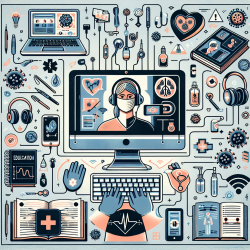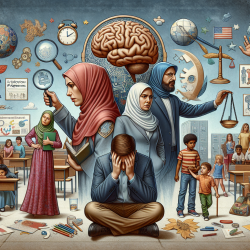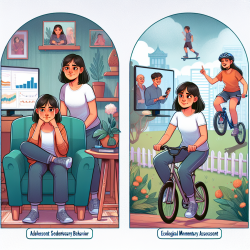Introduction
The COVID-19 pandemic has significantly disrupted medical education, presenting both challenges and opportunities for innovation. The research article "COVID-19 and Medical Education: A Four-Part Model to Assess Risks, Benefits, and Institutional Obligations During a Global Pandemic" provides a comprehensive framework to navigate these turbulent times. This blog will explore how practitioners can leverage these insights to enhance their skills and contribute to better outcomes in medical education.
Understanding the ALARA and AHACA Frameworks
The article introduces two critical frameworks: ALARA (As Low As Reasonably Achievable) and AHACA (As High As Conceivably Achievable). These frameworks, borrowed from high-risk industries like nuclear energy, offer a structured approach to managing risks and benefits in medical education during a pandemic.
- ALARA: Focuses on minimizing exposure risks by reducing time spent in high-risk areas, maximizing distance, and using protective barriers.
- AHACA: Balances the risks with potential educational and community benefits, ensuring that the involvement of medical learners is justified.
Practical Applications for Practitioners
Practitioners can implement these frameworks in several ways to enhance safety and learning outcomes:
- Develop risk protocols and metrics for the use of personal protective equipment (PPE) and ensure just-in-time training for learners.
- Utilize telemedicine to maintain distance and minimize direct exposure, allowing learners to participate safely in patient care.
- Conduct simulation-based assessments to ensure learners are competent in infection control and PPE usage before engaging in clinical activities.
Encouraging Further Research
The pandemic has highlighted the need for continuous research and adaptation in medical education. Practitioners are encouraged to delve deeper into the ALARA and AHACA frameworks, exploring their applicability in various clinical contexts. Further research can lead to more refined strategies that enhance both safety and educational outcomes.
Conclusion
By integrating the ALARA and AHACA frameworks, medical educators can navigate the complexities of teaching during a pandemic. These strategies not only ensure the safety of learners but also enhance their professional growth and commitment to the medical field. As we continue to adapt to the evolving landscape of healthcare, these frameworks provide a robust foundation for making informed, ethical decisions.
To read the original research paper, please follow this link: COVID-19 and Medical Education: A Four-Part Model to Assess Risks, Benefits, and Institutional Obligations During a Global Pandemic.










